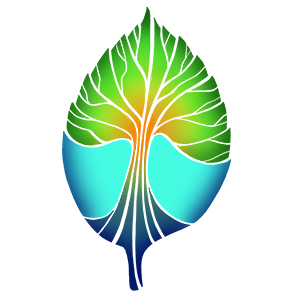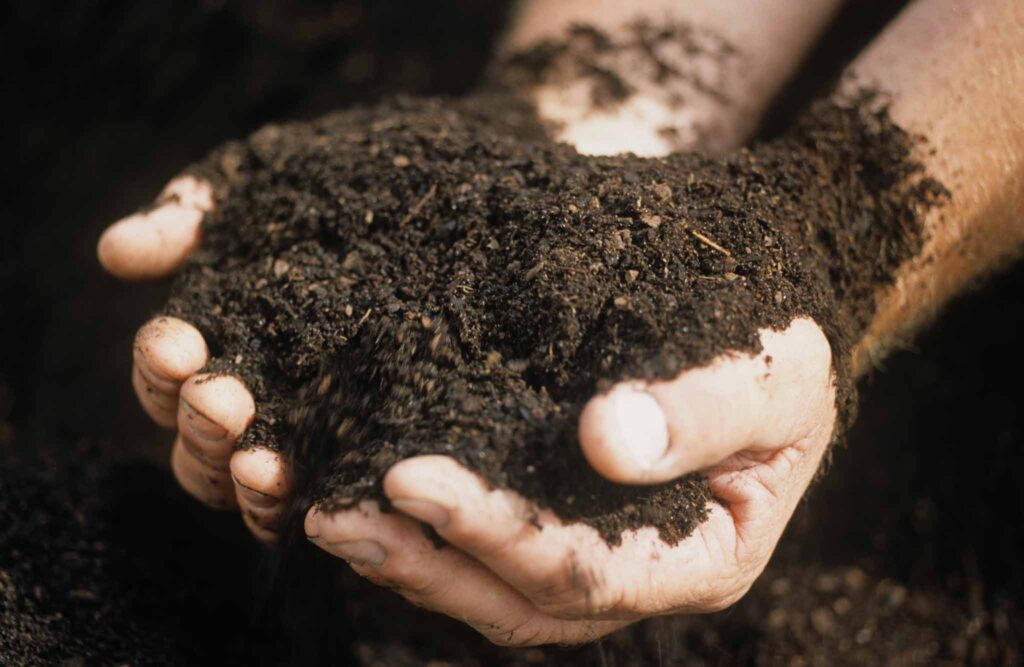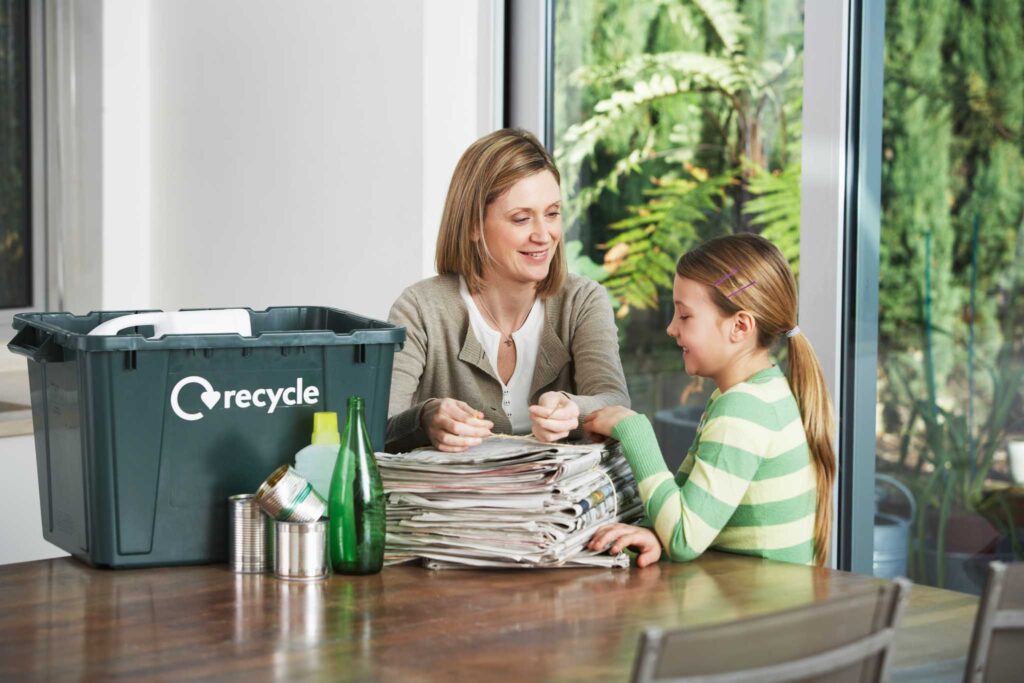Why is Grass Bad for the Environment?
Estimated reading time: 12 minutes
For as long as I can remember, my Dad was obsessed with our lawn. He would spend hours raking, cutting, spraying weeds, and watering our grass – all two acres of it. And when we were old enough, my brother and I were tasked to help as part of our household chores. In hindsight, although it was green, it certainly wasn’t very eco-friendly. Fast-forward almost twenty years, and I found myself living in my own little sustainable home with a small, grass-free yard. Read on to find out why grass is bad for the environment!
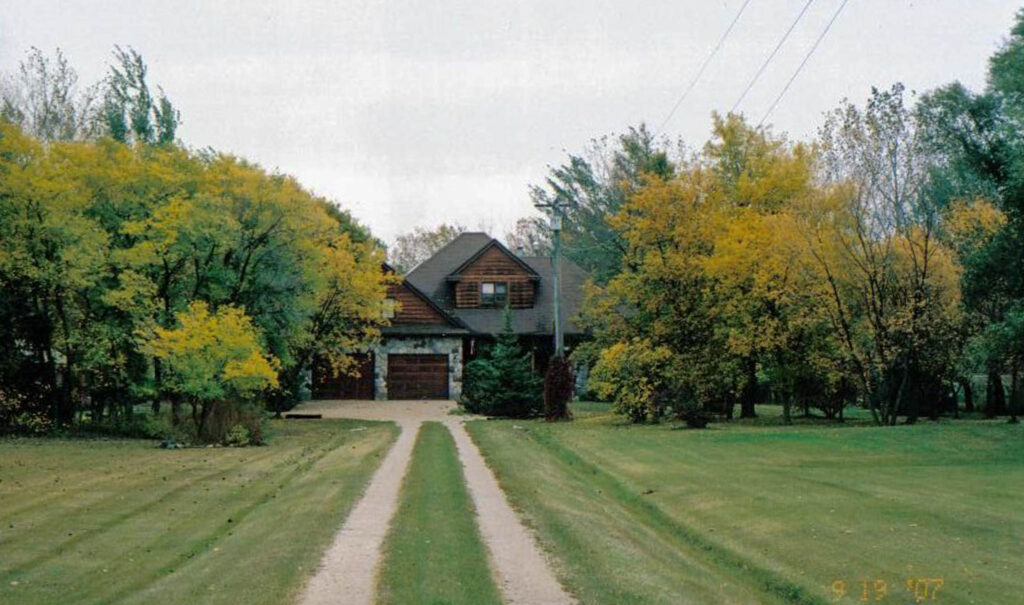
Honestly, I didn’t mind the outdoor time, and driving the riding mower was fun. Later, in my early twenties, I found it a burden after my Dad had passed and my brother had moved out. Finding the time between university courses, part-time work, rugby practices and games, and social life was almost impossible. Although this taught me responsibility and the value of hard work, it sure didn’t teach me to live a sustainable lifestyle.
Key takeaways
- Grass lawns came onto the scene in the 1700s and were then seen as a sign of royalty or wealth.
- Today, 200 gallons of water per person per day would be required to keep all the lawns in the U.S. healthy.
- According to the EPA, 40-60% of the fertilizers applied to lawns end up in surface and groundwater.
- Monoculture lawns are more susceptible to disease and invasive insect species and negatively affect the soil structure and makeup underneath.
- Gas-powered lawn mower emissions equal approximately 97 million tonnes each year in the U.S.
- There are many affordable and aesthetically pleasing alternatives to turf grass, such as wildflowers and native grasses, stone, patio space, decking, mulch, or clover!
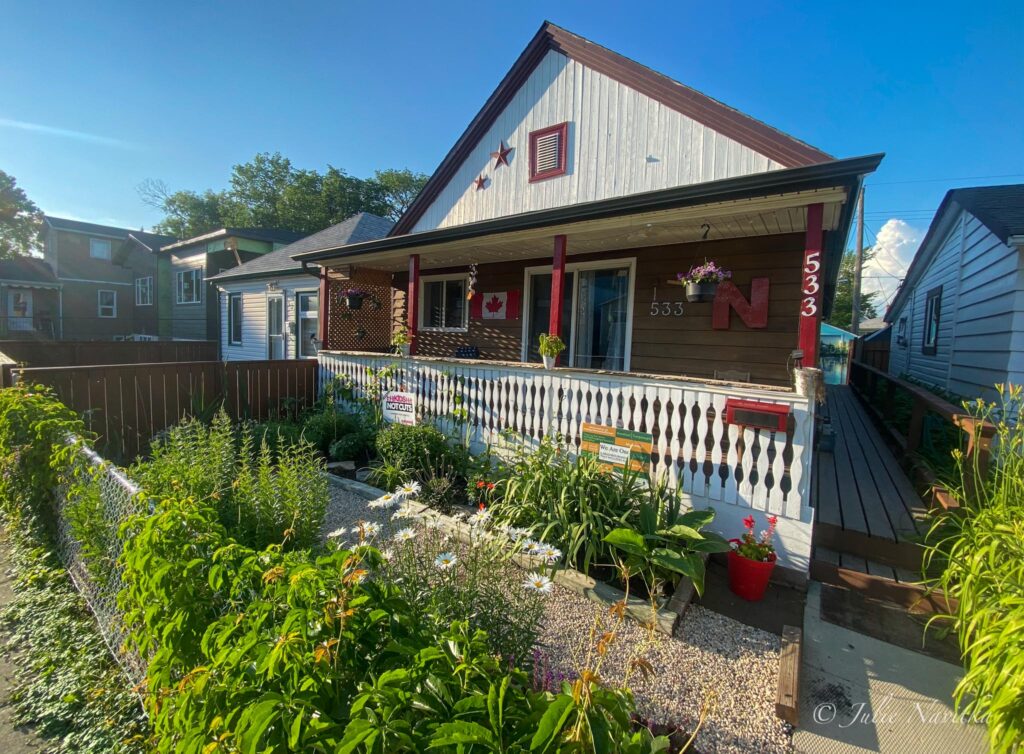
Why Did We Start Growing Lawns?
Our society sure does love its lush, green, “weed” free grass. I did some digging to find out when this trend came to be. You can easily find an extensive history on Wikipedia, but I’ll give you the long story short.
Areas around castles and fortresses needed to be cleared to see approaching enemies. Once cleared, the natural grasses would be free to grow. Since lawns were then seen as a sign of royalty or wealth, they gained popularity with the more noble crowd. Maintenance was not easy, and only the wealthy could afford the lawn care labor required.
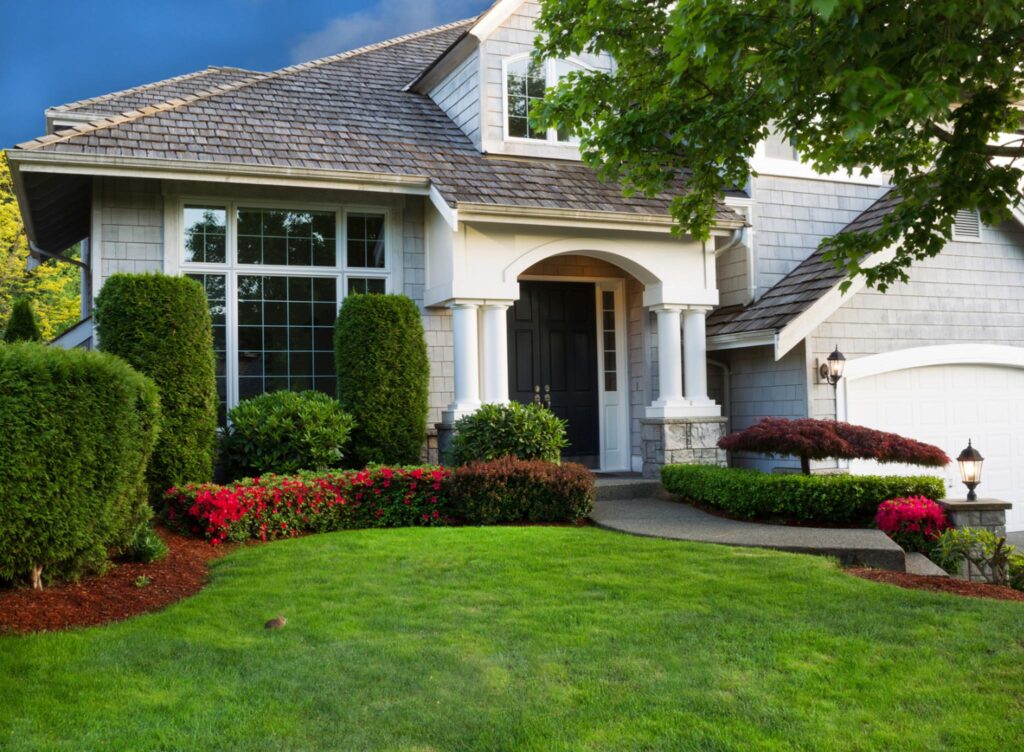
With the advent of the first lawn mower in 1830, lawns became more accessible to everyone, and an explosion ensued. Keeping up with the neighbors became the trend, and today we still regard a lush, full, green, and weed-free healthy lawn as a status symbol. It’s time to change that.
What makes Grass bad for the environment?
There are quite a few problems with covering your lawn with turf grass. Everything we do in the name of lawn maintenance has an impact, one way or the other. In the name of sustainability and the health of the earth, I urge you to read on to find out why grass is bad for the environment.
Water Consumption in Landscaping
A study conducted by the NASA Ames Research Center in California found that 200 gallons of water per person per day would be required to keep all the lawns in the U.S. healthy. This is an astronomical amount of freshwater! We all have a responsibility to reduce our water use at home to preserve one of our most precious natural resources.
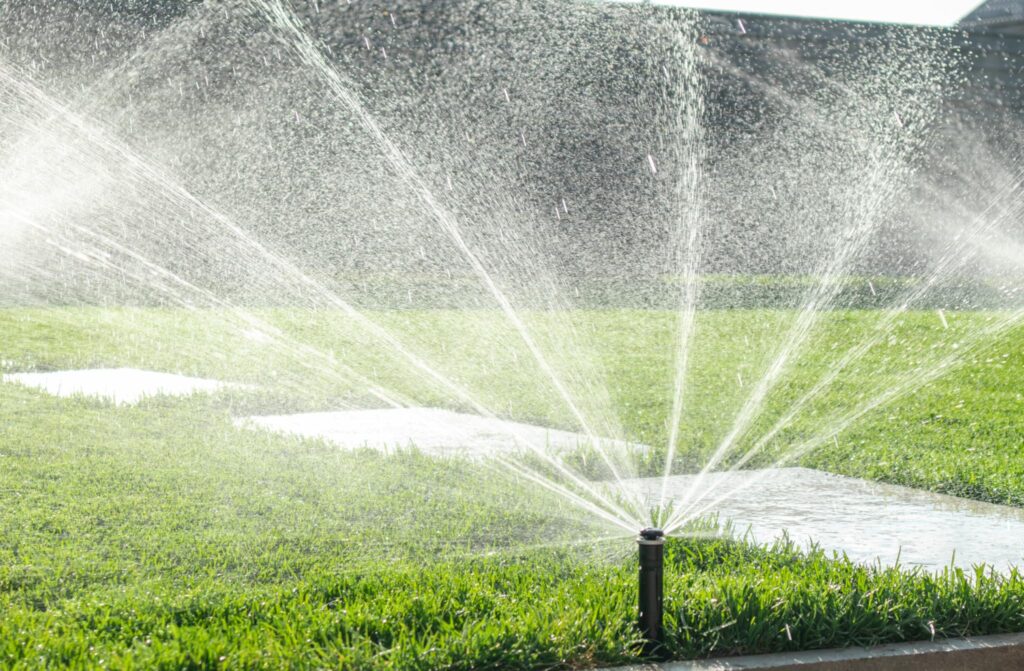
Lawns occupy 45.6 million acres in the U.S., making them the largest irrigated crop in the country!
Chemicals and Fertilizer
Using chemicals on our lawn is one more factor that makes grass bad for the environment. Most people with a home lawn are somewhat invested in weed control and desire beautiful emerald-green grass. This requires herbicides, synthetic fertilizer, and in some cases, pesticides. Three million tonnes of fertilizers are used yearly on lawns in the U.S.
Unless you’ve found some good, all-natural alternatives, these contain chemicals that are harmful to the environment. These chemicals run off or leach through the soil and into our water system. According to the EPA, 40-60% of the fertilizers applied to lawns end up in surface and groundwater. This fertilizer and pesticide runoff should be a serious concern.
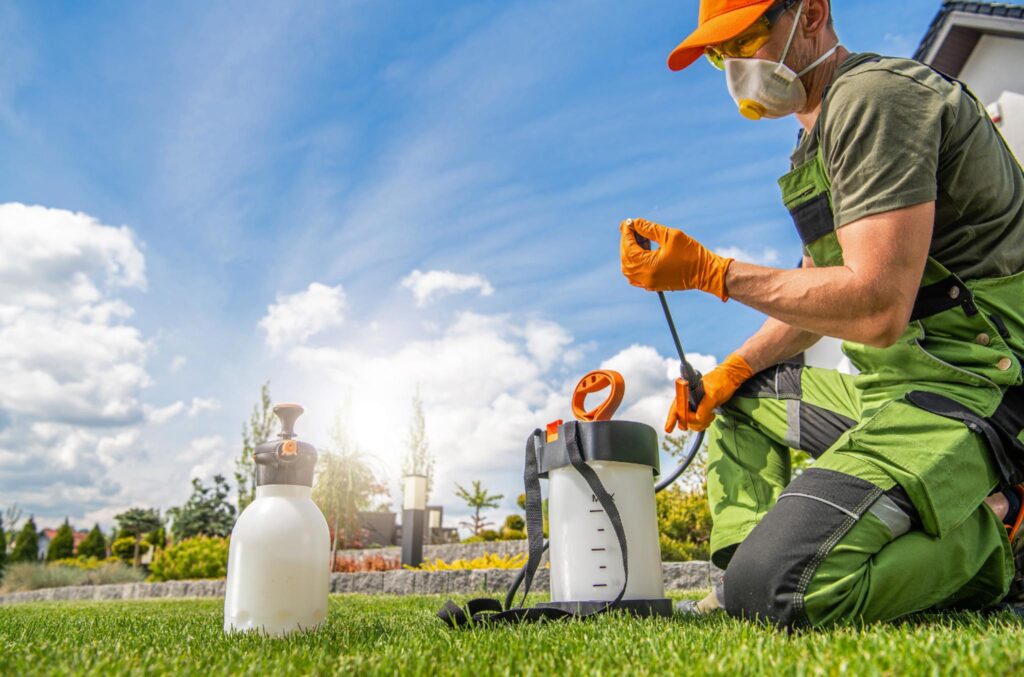
Remember that these substances are poisonous, and the yard is where the kids and pets play!
Monoculture
We are creating a monoculture by removing weeds and other natural plants from our grass. Concerns about monocultures are they lead to biodiversity loss, supporting very few species. This makes them more susceptible to disease and invasive insect species. It also negatively affects the soil structure and makeup underneath, leading to soil degradation.
Mowing Emissions make grass bad for the environment
According to a study by the EPA, lawnmowers account for 40% of the 121 million gasoline-powered lawn and garden equipment estimated to be in use in the U.S. The pollutants emitted by gas-powered lawnmowers each year in the U.S. is therefore approximately 97 million tonnes. If this isn’t a good reason to purchase a lawn mower with an alternative energy source, I don’t know what it is.
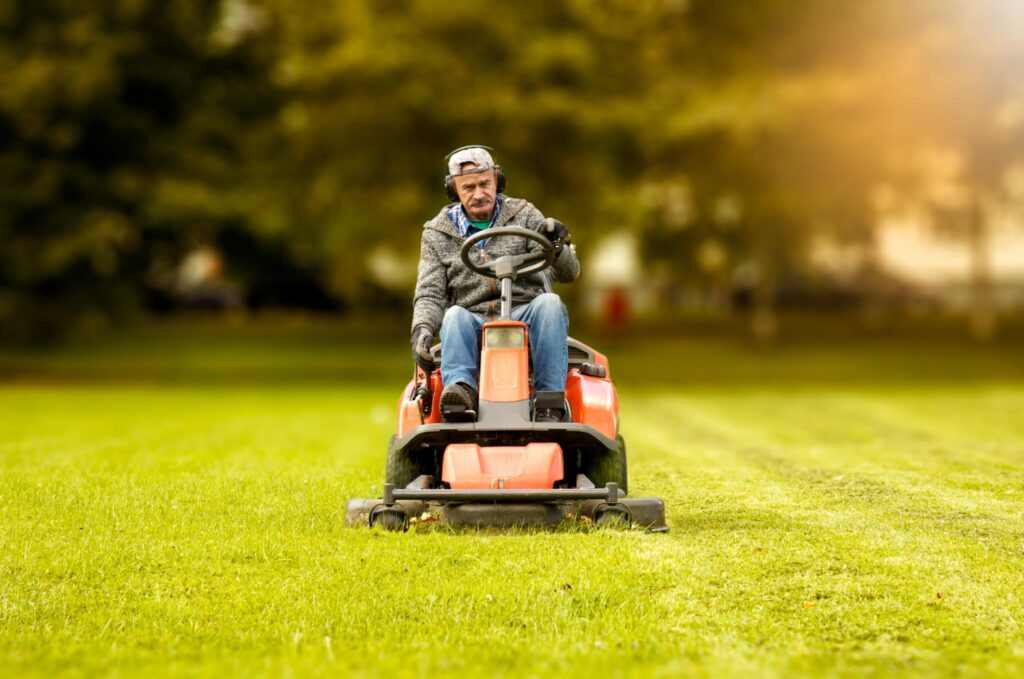
Stormwater Runoff
Most turf grasses used for lawns have very shallow roots. This, along with the soil being fairly compacted when the lawn was constructed and by use over time, means that lawns usually don’t allow rainwater to seep into the ground. The runoff from lawns into storm sewers is therefore comparable to asphalt or concrete. This extra stormwater runoff can cause flooding in surrounding areas.
Time and Money
If all of the other problems with grass haven’t changed your mind, this one may. Think of how much work and time you could save if you weren’t mowing, raking, spraying fertilizer, applying new seed, and watering all summer long. You could spend these hours of your life recreating sustainably! You’ll also save money as you won’t need to purchase all the machinery and tools necessary for this upkeep.
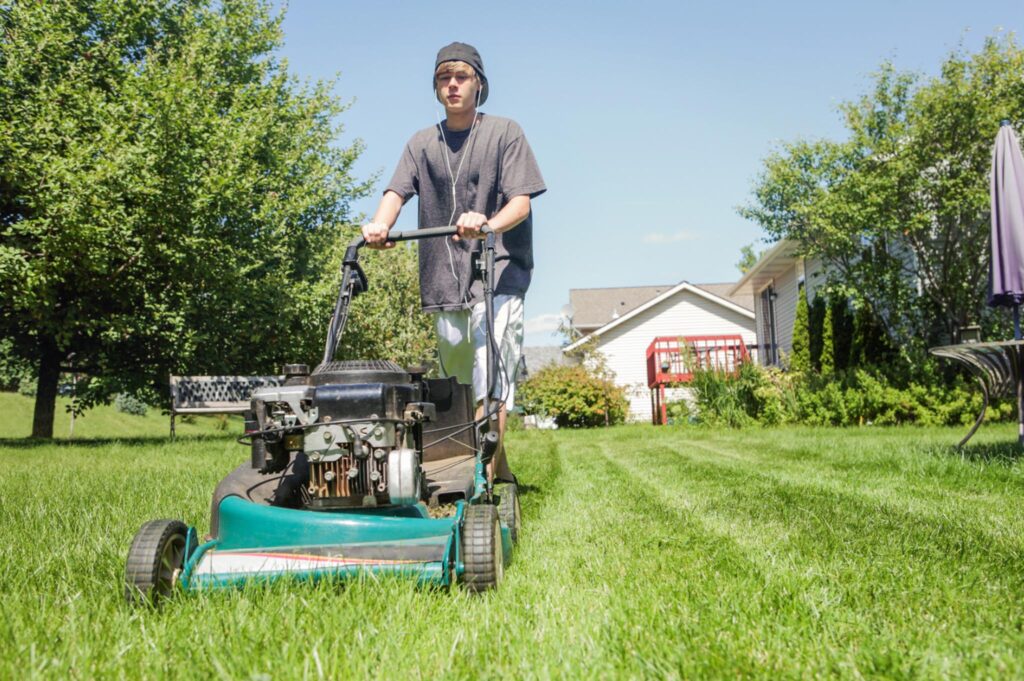
Are There Benefits to Grass?
Aside from what we believe to be the aesthetic appeal of a green lawn and a place for our kids and pets to play, there can be an environmental benefit to a healthy lawn.
Grass can act as a sink for carbon dioxide. As all green plants do, your grass will also produce oxygen as a byproduct of photosynthesis. So yes, your lawn does help clean the air, but so do many alternative ground cover options! Even though grass may not be entirely bad for the environment, there are other more eco-friendly choices out there.
What Are the Alternative Options?
Other Vegetation
Replacing your grass with other vegetation is definitely the most aesthetically pleasing option. Like grass, these plants will also capture carbon dioxide and produce oxygen. Many have deeper roots, opening up the soil structure and allowing rainwater to infiltrate rather than runoff.
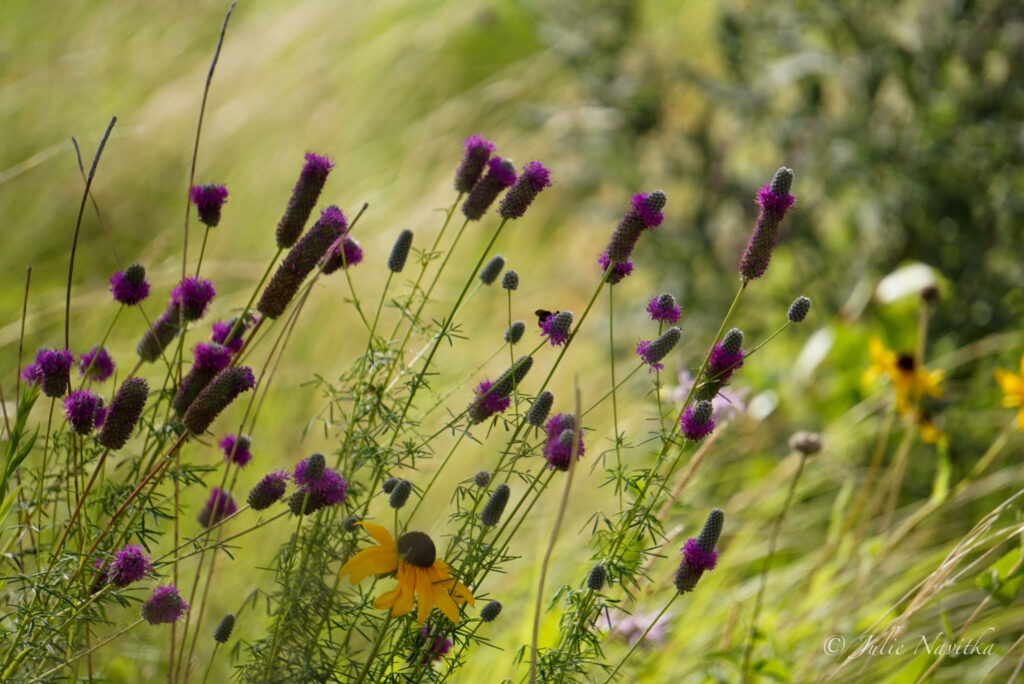
You can opt for more native plant landscaping with native grass plants and wildflowers, shrubs, and trees. Grasses and plants native to the area are typically drought resistant and will survive on rain alone. This kind of landscaping is known as xeriscaping. Trees absorb massive amounts of carbon, provide shade, and are a great spot to hang a hammock!
Landscaping with vegetable or flower gardens is another excellent alternative to grass. Growing your own vegetables, fruit, and herbs is rewarding mentally and in the kitchen. Flowers add color, beauty, and fragrance, provide for pollinators, and make a great dinner party host gift!
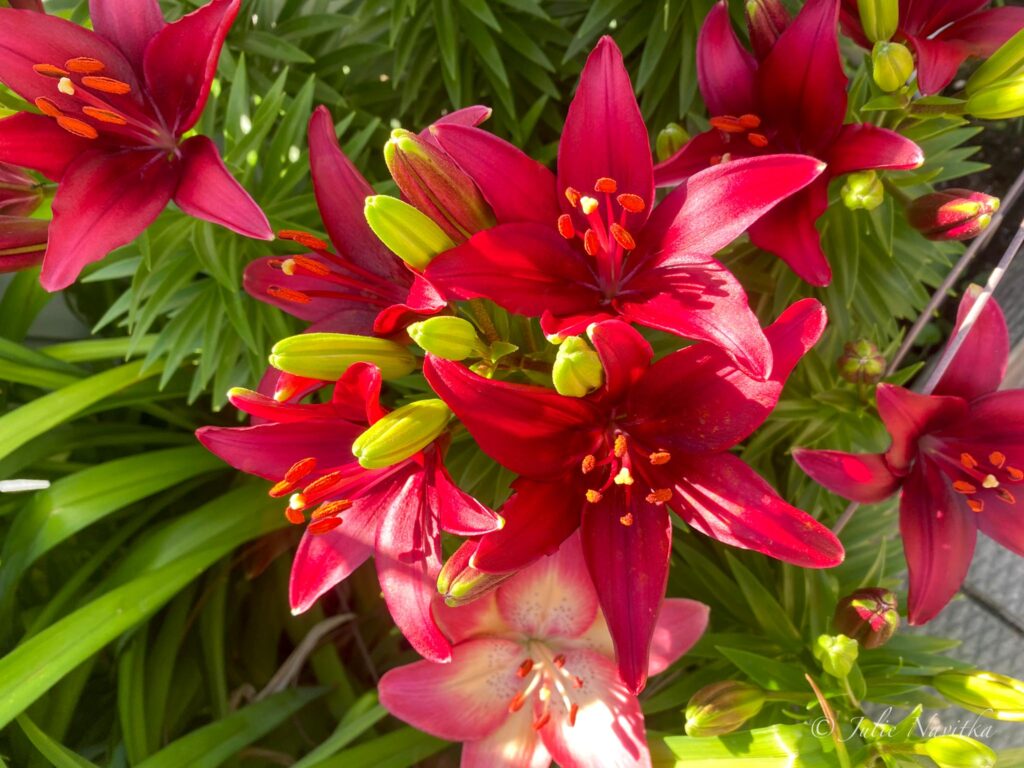
If you would still like a space for your kids or pets to play, many other easy ground cover alternatives don’t require watering or cutting. Some examples are micro clover, creeping jenny, creeping herbs like thyme, or buffalo grass.
Decking & other Landscaping Materials
Decking can provide a place to sit, do yoga, entertain, or BBQ. Invest in sustainable decking materials such as PCR plastic, FSC-certified hardwood, or composite made from reclaimed wood.
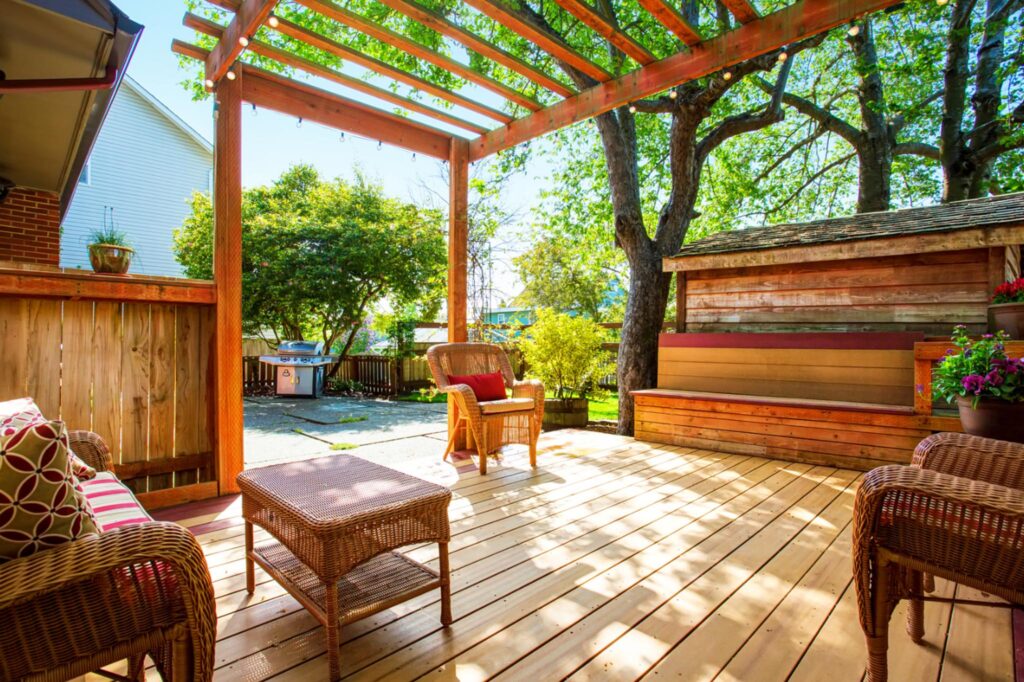
To create pathways and patio areas for seating in your yard, there are many inexpensive sustainable lawn alternatives like patio blocks, gravel, river wash, or sand. You can get a little fancy by purchasing granite, shale, or other decorative rocks local to your area.
If you live in a particularly arid climate, consider looking into artificial turf rather than rock or stone to create an area for children to play.
Adding a mulch or bark layer around the plants and shrubs will help regulate soil temperature, smother weeds, and retain moisture in the soil.
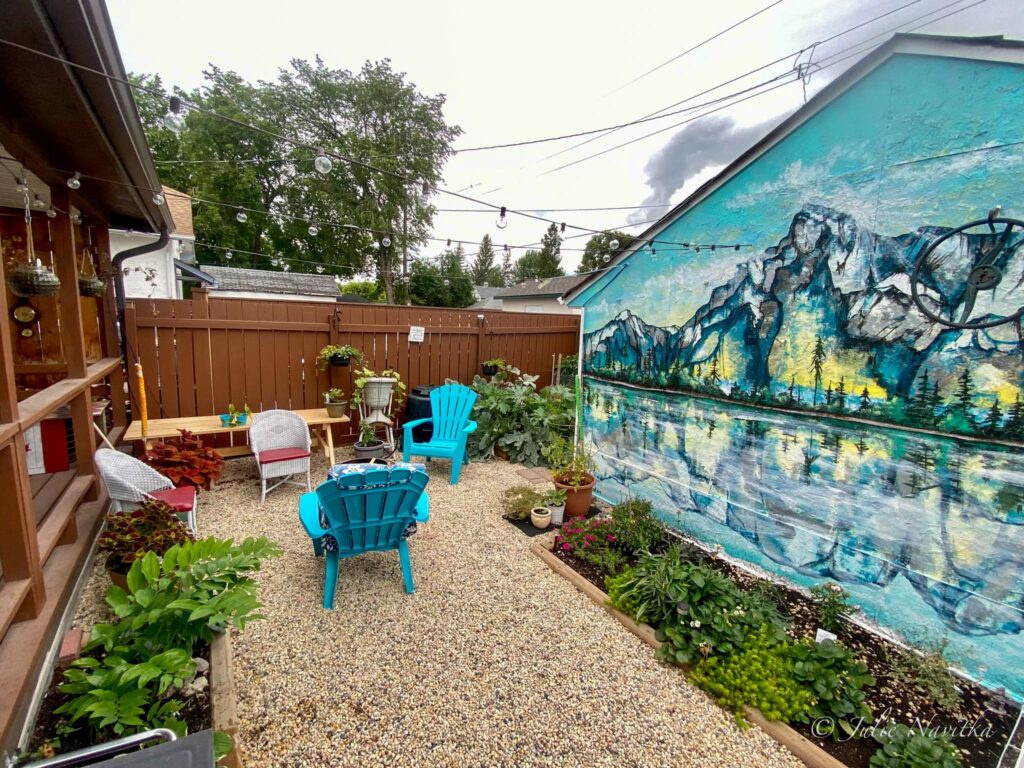
Make Use of Your Local Park
Another alternative to having grass in your yard at home is frequenting a nearby park! Longing for a space in which you can run around and throw a disc, or have a picnic on the grass? Do what many apartment renters do and head for your favourite sustainable greenspace.
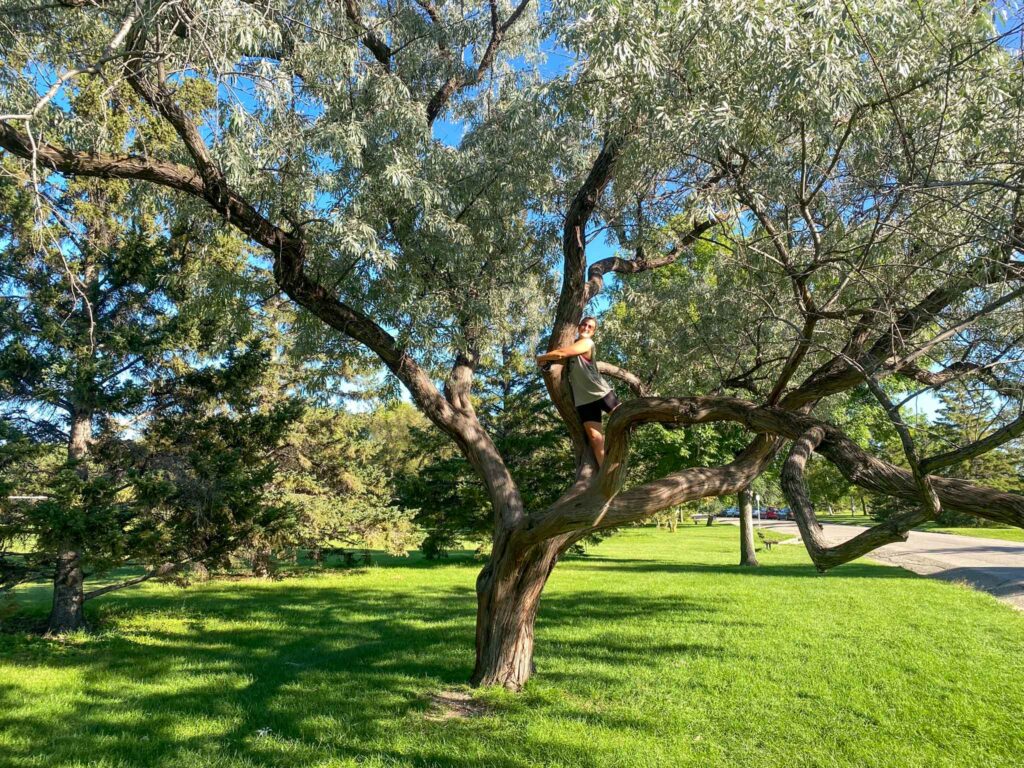
If You Must Have Turf Grass
Watering Tips
- Only water when absolutely necessary. If the soil still contains moisture, hold off on watering.
- Check the forecast – no need to water if it’s calling for rain!
- Invest in a rain barrel or two and use this water in the yard and lawn.
- Water in the early morning or later in the evening to avoid loss due to evaporation.
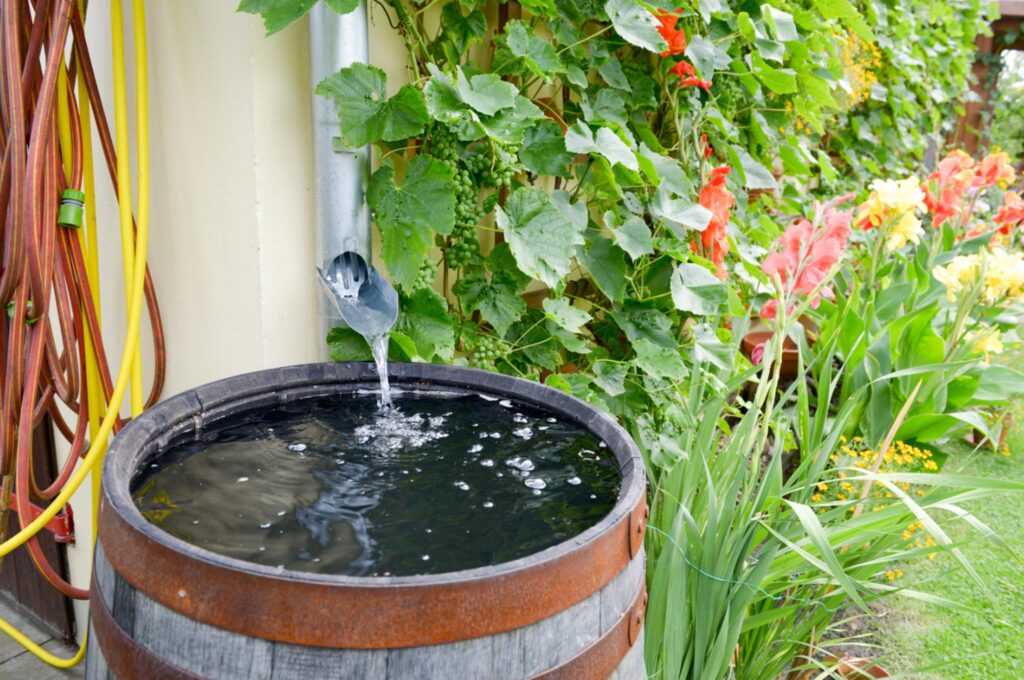
Eco-Friendly Fertilizer
Check out some more environmentally friendly ways to fertilize:
- Start a compost bin and use your finished product to fertilize by adding a top layer about 1/4 inch thick in early spring.
- Leave your grass clippings to decompose on the lawn; this can almost halve the synthetic nitrogen fertilizer needed.
- Choose grass suited to your climate. It will require less fertilizer in general.
- Aerate your soil to allow nutrients to be absorbed more easily.
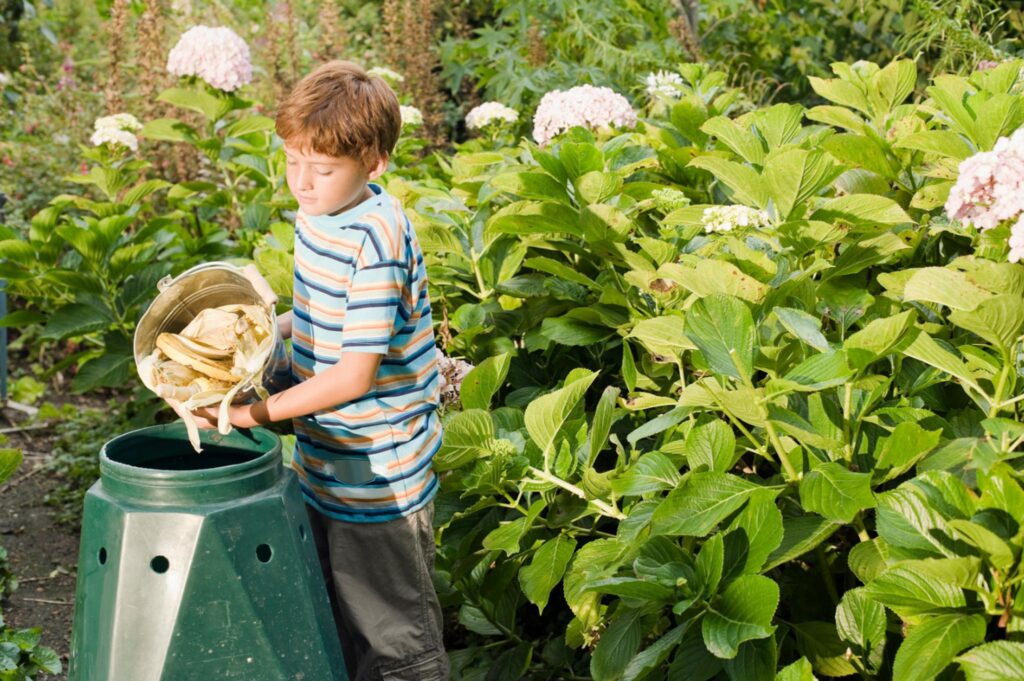
Mowing the Lawn
- Mow less often. Longer blades of grass improve moisture retention in the soil, which will also mean less watering!
- Choose a more eco-friendly lawn mower for cutting your grass, such as a push-blade lawn mower or an electric lawn mower.
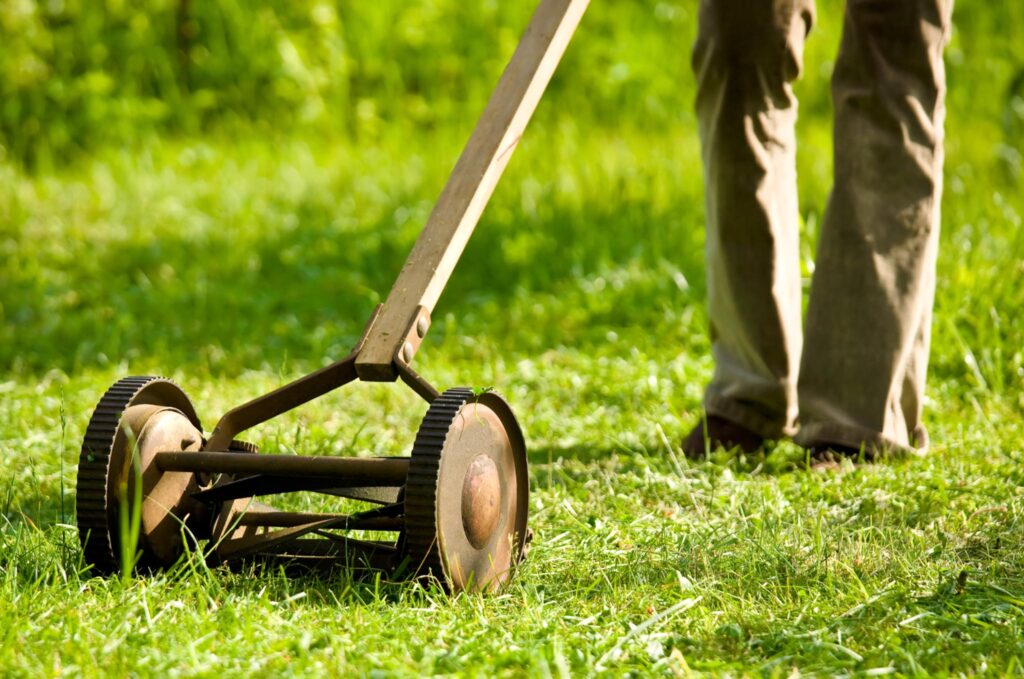
Here are some affordable options:
- With stores in more than 11 states, Ace Hardware offers a large variety of battery-powered mowers starting at $399.
- Located all over the U.S., Greenworks has many electric lawn and garden tools.
- For my home country folk, Canadian Tire has a large variety of electric mowers to choose from.
Final Thoughts about why grass is bad for the environment
When you make the switch to a grass-free lawn, you’ll benefit not only yourself but also the tiny ecosystem in your own backyard. By choosing natural landscaping, you can create a space designed for your taste and style rather than settling for the “norm” of a yard full of grass. You’ll spend less money and time on maintenance while doing your part for the environment, creating a healthier world.
Happy Sustainable Gardening Practices!

